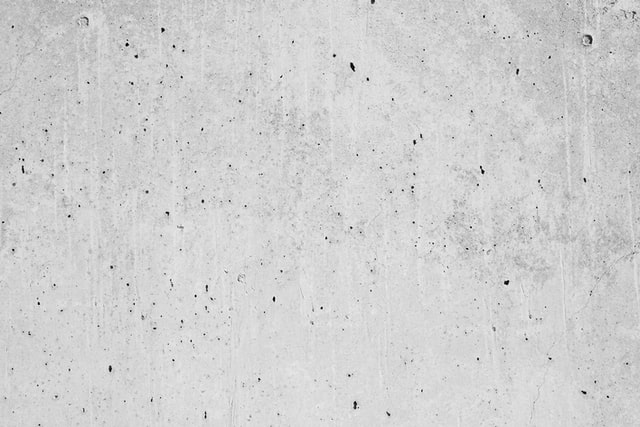Whatever the size and scale of the project you have planned, it’s very important that you order the correct amount of concrete for the job. If you order too little, you’ll have a temporarily unfinished job on your hands. If this initial batch of concrete is allowed to set before you get the chance to add the rest, you’ll end up with a seam in the finish known as a cold joint. If you’re using the concrete for some structural applications this can be a real problem.
If you order too much concrete, you’ll end up paying more than was necessary. It’s very easy for costs to spiral out of control on any project, so ensuring that you get your concrete order right matters. If you order too much you could end up forking out more to dispose of it correctly.

Image via Unsplash
To keep tabs on costs and minimise on-site headaches it makes sense to get your order right the first time.
At Goodmix Concrete we can advise you how to measure your space and work out how much concrete you will need for your job. An online concrete volume calculator can also be useful.
Calculating the metric volume of concrete that you’ll need
Many people who are placing a concrete order for the first time can find it something of a minefield. At first glance, the process can look confusing with lots of different factors to consider. However, it’s relatively straightforward once you understand the basics.
The first thing to consider is the shape of the space you’re concreting. If it’s a regular four-sided shape like a square or a rectangle, calculating the volume is fairly simple. You will need to measure the depth, the length and the width of the space and then multiply them together.
If you’re looking to concrete an irregular shape, you will need to break that shape up into a series of regular shapes. This can be tricky when you’re measuring circular, prism or other irregular shapes, so take your time to get it right.
It can be helpful to find as many regular shapes within the irregular one as you can. For instance, a teardrop shaped space may contain a larger square or rectangle in the middle. It may also contain a number of triangular shapes. With these you measure the two longest sides, double them, and multiply those figures with the depth. Then divide the final figure in two to get an accurate volume figure for that section.
All the units you use should be uniform and metric, and you should be meticulous in recording the measurements. Check and double-check. If you can, let someone else on site check your figures.
Some people find it prudent to add 5-10% to the final figure, particularly if they’re placing an order for the first time. But don’t go overboard, too much concrete on your hands is one headache you should try to avoid. A perfectly placed order will complete the job with a small amount of concrete left over. Ordering precisely the amount you have calculated for the job may save you a few pounds but can be risky.
How to get your order right
As well as working out the volume of the concrete you require, there are a range of other factors that you’ll need to consider. Different jobs require different types and densities of concrete. Colours and texture can vary as well, so it’s important to think about the kind of finish you require before you start.
Concrete Density
Building regulations determine the density of concrete required for different building projects. As a house foundation only needs to withstand foot traffic, it doesn’t require the same density of concrete as a driveway or a garage floor. A goods yard used by heavy vehicles on a daily basis would require a density that gives it strength enough to cope.
Types of concrete
Different types of concrete are suitable for different purposes. A grading system indicates the compressive strength rating of concrete 28 days after the concrete was poured. The grading reflects the job that the concrete is needed for. This should make it easier to ensure you order the correct density and strength for the job you have in mind.
This grading system ranges from C7/8, which is usually used for domestic foundations, kerbing, haunching and cavity filling, through to C40 which is the heaviest duty grade of concrete. This is the grade of concrete used in HGV car parks and large-scale civil engineering projects. In between the two extremes are a range of intermediate grades for different purposes.
If you’re in any doubt about the kind of concrete you might require, it’s important to discuss your requirements with your concrete supplier. At Goodmix Concrete we’re experienced in providing concrete for a wide range of jobs with very different requirements. We can help you choose the right grade and ensure that your work is built to last.
Goodmix Concrete are the North West’s leading provider of ready-mix and barrow-mix concrete.
If it’s the first time you’ve had to order concrete, you may be confused about the whole process and concerned about getting it right. Although it can appear complicated, it’s one we deal with every day. We’re the leading provider of both ready-mix and barrow mix concrete across the North West, to projects of all different sizes both domestic and commercial.
As ready-mix concrete is delivered on time to a customer’s precise specifications it eliminates issues of waste and over ordering. You only pay for the concrete you actually require. At Goodmix Concrete we only use aggregate direct from the quarry, never cheaper recycled materials.
If you’re currently planning a domestic or commercial project that requires high-quality, reliable concrete why not get in touch for some professional advice? Our highly experienced team are ready to answer your questions and we can deliver to your site within 24 hours.





